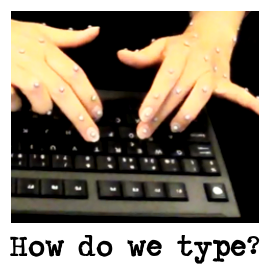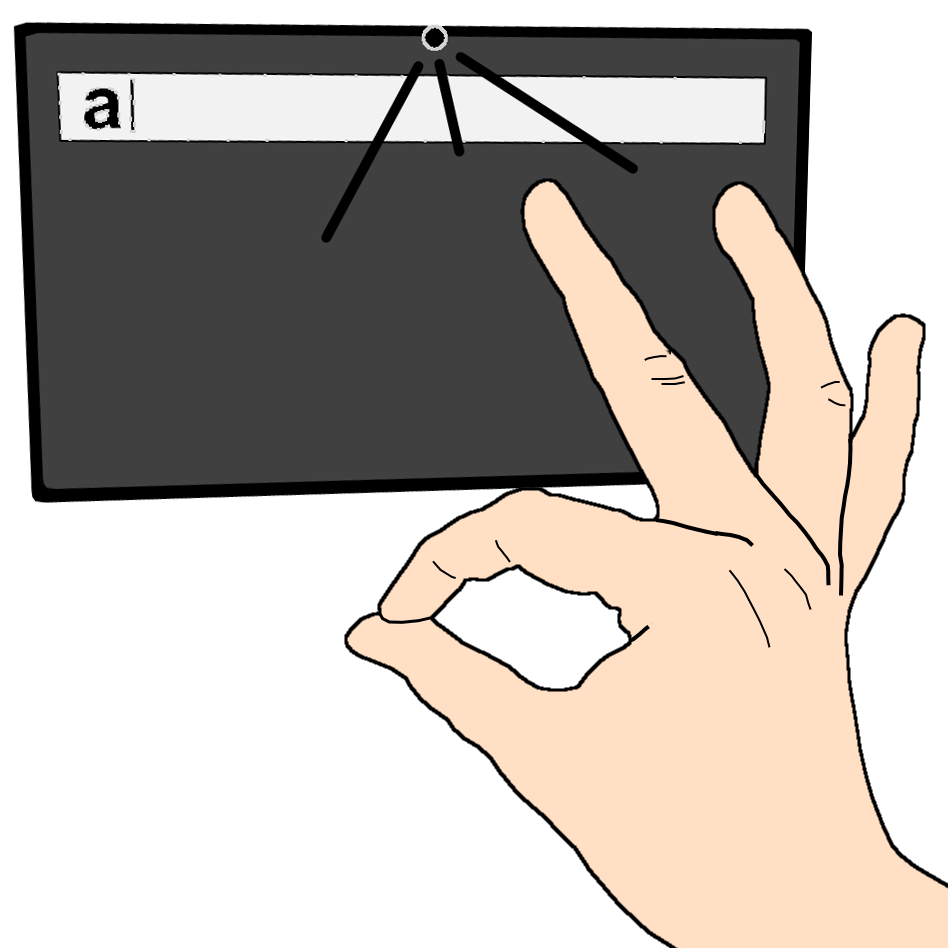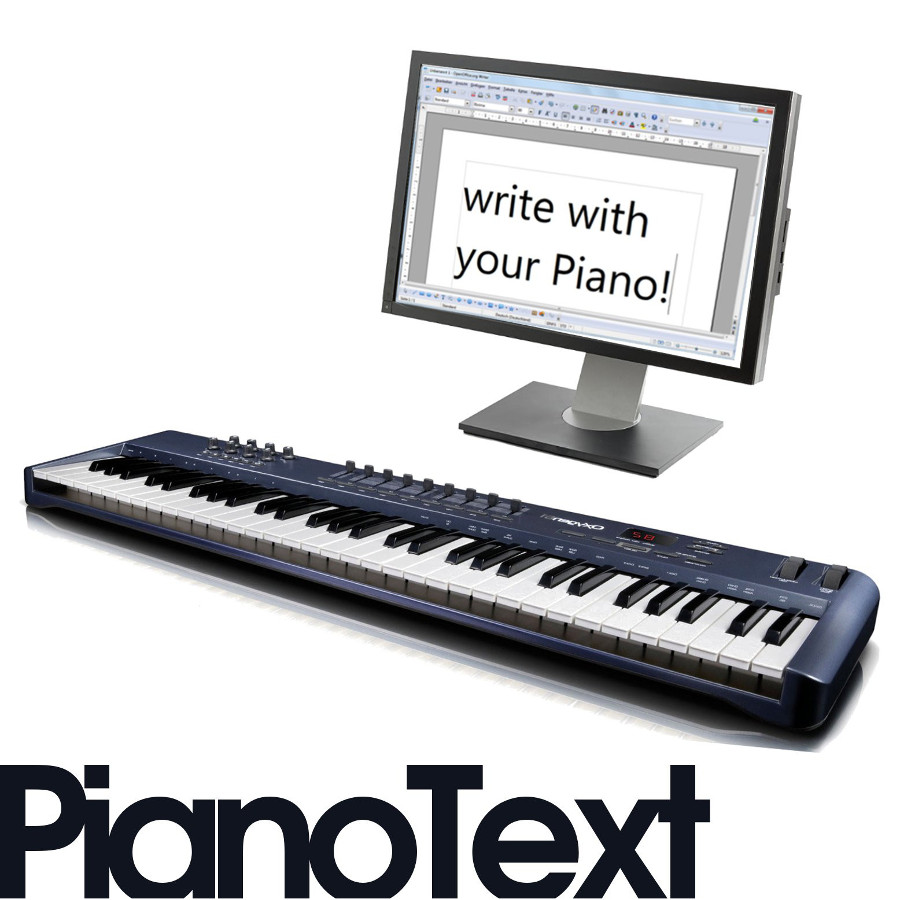Dissertation
Assignment Problems for Optimizing Text Input
Aalto University publication series DOCTORAL DISSERTATIONS, 103/2018
This thesis won the SIGCHI Outstanding Dissertation Award in 2019.
My PhD thesis advances the state of the art in text-entry optimization by proposing novel objective functions that quantify the performance, ergonomics and learnability of a text input method. In addition, the thesis gives an introduction to user interface optimization and summarizes work in text entry optimization from the last 80 years. The assignment problem thereby serves as a unifying framework for formulating the novel objectives as well as those from prior work. I show the optimization of text input in three concrete cases: text input with multi-finger gestures in mid-air, text input on a long piano keyboard, and -- for a contribution to the official French keyboard standard -- input of special characters via a physical keyboard.
While the work focused on text input, the assignment problem can be used to model other design problems in HCI (e.g., how best to assign commands to UI controls or distribute UI elements across several devices), for which the same problem formulations, optimization techniques, and even models could be applied.
Full papers
XRgonomics: Facilitating the Creation of Ergonomic 3D Interfaces
Conference paper, ACM CHI 2021.
Arm discomfort is a common issue in Cross Reality applications involving prolonged mid-air interaction. Solving this problem is difficult because of the lack of tools and guidelines for 3D user interface design. Therefore, we propose a method to make existing ergonomic metrics available to creators during design by estimating the interaction cost at each reachable position in the user’s environment. We present XRgonomics, a toolkit to visualize the interaction cost and make it available at runtime, allowing creators to identify UI positions that optimize users’ comfort. Two scenarios show how the toolkit can support 3D UI design and dynamic adaptation of UIs based on spatial constraints. We present results from a walkthrough demonstration, which highlight the potential of XRgonomics to make ergonomics metrics accessible during the design and development of 3D UIs. Finally, we discuss how the toolkit may address design goals beyond ergonomics.
Detecting Relevance during Decision-Making from Eye Movements for UI Adaptation
Conference paper, ACM ETRA 2020.
PDF
BibTeX
Project page
Anna Maria Feit, Lukas Vordemann, Seonwook Park, Catharina Berube, Otmar Hilliges
This paper proposes an approach to detect information relevance during decision-making from eye movements in order to enable user interface adaptation. This is a challenging task because gaze behavior varies greatly across individual users and tasks and ground-truth data is difficult to obtain. Thus, prior work has mostly focused on simpler target-search tasks or on establishing general interest, where gaze behavior is less complex. From the literature, we identify six metrics that capture different aspects of the gaze behavior during decision-making and combine them in a voting scheme. We empirically show, that this accounts for the large variations in gaze behavior and out-performs standalone metrics. Importantly, it offers an intuitive way to control the amount of detected information, which is crucial for different UI adaptation schemes to succeed. We show the applicability of our approach by developing a room-search application that changes the visual saliency of content detected as relevant. In an empirical study, we show that it detects up to 97% of relevant elements with respect to user self-reporting, which allows us to meaningfully adapt the interface, as confirmed by participants. Our approach is fast, does not need any explicit user input and can be applied independent of task and user.
Context-Aware Online Adaption of Mixed Reality Interfaces
Conference paper, ACM UIST 2019.
We present an optimization-based approach for Mixed Reality (MR) systems to automatically control when and where applications are shown, and how much information they display. Currently, content creators design applications, and users then manually adjust which applications are visible and how much information they show. This choice has to be adjusted every time users switch context, i.e., whenever they switch their task or environment. Since context switches happen many times a day, we believe that MR interfaces require automation to alleviate this problem. We propose a real-time approach to automate this process based on users' current cognitive load and knowledge about their task and environment. Our system adapts which applications are displayed, how much information they show, and where they are placed. We formulate this problem as a mix of rule-based decision making and combinatorial optimization which can be solved efficiently in real-time. We present a set of proof-of-concept applications showing that our approach is applicable in a wide range of scenarios. Finally, we present an evaluation with a dual task paradigm. Our approach resulted in similar task performance as a traditional UI and decreased secondary tasks interactions by 36%.

How do People Type on Mobile Devices? Observations from a Study with 37,000 Volunteers
Conference paper, ACM MobileHCI 2019.
This paper presents a large-scale dataset on mobile text entry collected via a web-based transcription task performed by 37,370 volunteers. The average typing speed was 36.2 WPM with 2.3 uncorrected errors.
The scale of the data enables powerful statistical analyses on the correlation between typing performance and various factors, such as demographics, finger usage, and use of intelligent text entry techniques.
We report effects of age and finger usage on performance that correspond to previous studies.
We also find evidence of relationships between performance and use of intelligent text entry techniques:
auto-correct usage correlates positively with entry rates, whereas word prediction usage has a negative correlation.
To aid further work on modeling, machine learning and design improvements in mobile text entry, we make the code and dataset openly available.

Observations on Typing from 136 Million Keystrokes
Conference paper, ACM CHI 2018. Honourable Mention Award.
We report on typing behaviour and performance of 168,000 volunteers in an online study. The large dataset allows detailed statistical analyses of keystroking patterns, linking them to typing performance. Besides reporting distributions and confirming some earlier findings, we report two new findings. First, letter pairs that are typed by different hands or fingers are more predictive of typing speed than, for example, letter repetitions. Second, rollover-typing, wherein the next key is pressed before the previous one is released, is sur- prisingly prevalent. Notwithstanding considerable variation in typing patterns, unsupervised clustering using normalised inter-key intervals reveals that most users can be divided into eight groups of typists that differ in performance, accuracy, hand and finger usage, and rollover. The code and dataset are released for scientific use.
AdaM: Adapting Multi-User Interfaces for Collaborative Environments in Real-Time
Conference paper, ACM CHI 2018.
PDF, 4MB
BibTeX
Project page
Seonwook Park, Christoph Gebhardt, Roman Rädle, Anna Maria Feit, Hana Vrzakova, Niraj Dayama, Hui-Shyong Yeo, Clemens Klokmose, Aaron Quigley, Antti Oulasvirta, Otmar Hilliges
Developing cross-device multi-user interfaces (UIs) is a challenging problem. There are numerous ways in which content and interactivity can be distributed. However, good solutions must consider multiple users, their roles, their preferences and access rights, as well as device capabilities. Manual and rule-based solutions are tedious to create and do not scale to larger problems nor do they adapt to dynamic changes, such as users leaving or joining an activity. In this paper, we cast the problem of UI distribution as an assignment problem and propose to solve it using combinatorial optimization. We present a mixed integer programming formulation which allows real-time applications in dynamically changing collaborative settings. It optimizes the allocation of UI elements based on device capabilities, user roles, preferences, and access rights. We present a proof-of-concept designer-in-the-loop tool, allowing for quick solution exploration. Finally, we compare our approach to traditional paper prototyping in a lab study.
Physical Keyboards in Virtual Reality: Analysis of Typing Performance and Effects of Avatar Hands
Conference paper, ACM CHI 2018.
PDF, 8.2MB
BibTeX
Pascal Knierim, Valentin Schwind, Anna Maria Feit, Florian Nieuwenhuizen, Niels Henze
Entering text is one of the most common tasks when interacting with computing systems. Virtual Reality (VR) presents a challenge as neither the user's hands nor the physical input devices are directly visible. Hence, conventional desktop peripherals are very slow, imprecise, and cumbersome. We developed a apparatus that tracks the user's hands, and a physical keyboard, and visualize them in VR. In a text input study with 32 participants, we investigated the achievable text entry speed and the effect of hand representations and transparency on typing performance, workload, and presence. With our {apparatus}, experienced typists benefited from seeing their hands, and reach almost outside-VR performance. Inexperienced typists profited from semi-transparent hands, which enabled them to type just 5.6 WPM slower than with a regular desktop setup. We conclude that optimizing the visualization of hands in VR is important, especially for inexperienced typists, to enable a high typing performance.
Selection-based Text Entry in Virtual Reality
Conference paper, ACM CHI 2018.
PDF, 2.5MB
BibTeX
Marco Speicher, Anna Maria Feit, Pascal Ziegler, Antonio Krüger
In recent years, Virtual Reality (VR) and 3D User Interfaces (3DUI) have seen a drastic increase in popularity, especially in terms of consumer-ready hardware and software. While the technology for input as well as output devices is market ready, only a few solutions for text input exist, and empirical knowledge about performance and user preferences is lacking. In this paper, we study text entry in VR by selecting characters on a virtual keyboard. We discuss the design space for assessing selection-based text entry in VR. Then, we implement six methods that span different parts of the design space and evaluate their performance and user preferences. Our results show that pointing using tracked hand-held controllers outperforms all other methods. Other methods such as head pointing can be viable alternatives depending on available resources. We summarize our findings by formulating guidelines for choosing optimal virtual keyboard text entry methods in VR.
Computational Support for Functionality Selection in Interaction Design
Journal paper, ACM TOCHI, 2017
Designing interactive technology entails several objectives, one of which is identifying and selecting appropriate functionality. Given candidate functionalities such as “print,” “bookmark,” and “share,” a designer has to choose which functionalities to include and which to leave out. Such choices critically affect the acceptability, productivity, usability, and experience of the design. However, designers may overlook reasonable designs because there is an exponential number of functionality sets and multiple factors to consider. This article is the first to formally define this problem and propose an algorithmic method to support designers to explore alternative functionality sets in early stage design. Based on interviews of professional designers, we mathematically define the task of identifying functionality sets that strike the best balance among four objectives: usefulness, satisfaction, ease of use, and profitability. We develop an integer linear programming solution that can efficiently solve very large instances (set size over 1,300) on a regular computer. Further, we build on techniques of robust optimization to search for diverse and surprising functionality designs. Empirical results from a controlled study and field deployment are encouraging. Most designers rated computationally created sets to be of the comparable or superior quality than their own. Designers reported gaining better understanding of available functionalities and the design space.

Toward Everyday Gaze Input: Accuracy and Precision of Eye Tracking and Implications for Design
Conference paper, ACM CHI 2017. Honourable Mention Award.
 PDF, 7.8MB
BibTeX
Slides
Anna Maria Feit, Shane Williams, Arturo Toledo, Ann Paradiso, Harish Kulkarni, Shaun Kane, and Meredith Ringel Morris
PDF, 7.8MB
BibTeX
Slides
Anna Maria Feit, Shane Williams, Arturo Toledo, Ann Paradiso, Harish Kulkarni, Shaun Kane, and Meredith Ringel Morris
For eye tracking to become a ubiquitous part of our everyday
interaction with computers, we first need to understand its
limitations outside rigorously controlled labs, and develop
robust applications that can be used by a broad range of users
and in various environments. Toward this end, we collected
eye tracking data from 80 people in a calibration-style task,
using two different trackers in two lighting conditions. We
found that accuracy and precision can vary between users and
targets more than six-fold, and report on differences between
lighting, trackers, and screen regions. We show how such
data can be used to determine appropriate target sizes and
to optimize the parameters of commonly used filters. We
conclude with design recommendations and examples how
our findings and methodology can inform the design of error-
aware adaptive applications.
How We Type: Movement Strategies and Performance in Everyday Typing
Conference paper, ACM CHI 2016
This paper revisits the present understanding of typing,
which originates mostly from studies of trained typists
using the ten-finger touch typing system.
Our goal is to characterise the majority of present-day users
who are untrained and employ diverse, self-taught techniques.
In a transcription task, we compare self-taught typists and
those that took a touch typing course. We report several differences
in performance, gaze deployment and movement strategies.
The most surprising finding is that self-taught typists can achieve
performance levels comparable with touch typists, even when using fewer fingers.
Motion capture data exposes 3 predictors of high performance:
1) unambiguous mapping (a letter is consistently pressed by the same finger),
2) active preparation of upcoming keystrokes, and
3) minimal global hand motion.
We release an extensive dataset on everyday typing behavior.
Investigating the Dexterity of
Multi-Finger Input for Mid-Air Text Entry
Conference on Human Factors in Computing Systems, CHI 2015
This paper investigates an emerging input method enabled by
progress in hand tracking: input by free motion of fingers. The
method is expressive, potentially fast, and usable across many
settings as it does not insist on physical contact or visual
feedback. Our goal is to inform the design of high-performance
input methods by providing detailed analysis of the performance
and anatomical characteristics of finger motion. We conducted an
experiment using a commercially available sensor to report on
the speed, accuracy, individuation, movement ranges, and
individual differences of each finger. Findings show differences
of up to 50% in movement times and provide indices quantifying
the individuation of single fingers. We apply our findings to
text entry by computational optimization of multi-finger
gestures in mid-air. To this end, we define a novel objective
function that considers performance, anatomical factors, and
learnability. First investigations of one optimization case show
entry rates of 22 words per minute (WPM). We conclude with a
critical discussion of the limitations posed by human factors
and performance characteristics of existing markerless hand
trackers.
Redesigning the Piano Keyboard for
Text Entry
Conference paper, ACM DIS 2014
Inspired by the high keying rates of skilled pianists, we study
the design of piano keyboards for rapid text entry. We review
the qualities of the piano as an input device, observing four
design opportunities: 1) chords, 2) redundancy (more keys than
letters in English), 3) the transfer of musical skill and 4)
optional sound feedback. Although some have been utilized in
previous text entry methods, our goal is to exploit all four in
a single design. We present PianoText, a computationally
designed mapping that assigns letter sequences of English to
frequent note transitions of music. It allows fast text entry on
any MIDI-enabled keyboard and was evaluated in two transcription
typing studies. Both show an achievable rate of over 80 words
per minute. This parallels the rates of expert Qwerty typists
and doubles that of a previous piano-based design from the 19th
century. We also design PianoText-Mini, which allows for
comparable performance in a portable form factor. Informed by
the studies, we estimate the upper bound of typing performance,
draw implications to other text entry methods, and critically
discuss outstanding design challenges.






